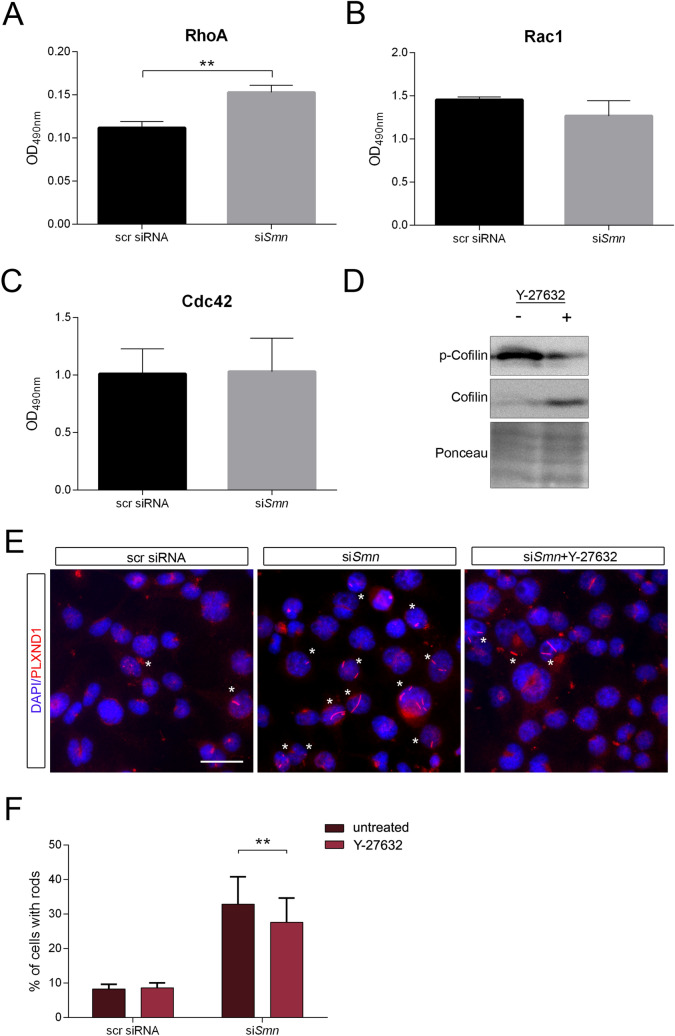Figure 4.
RhoA-ROCK axis is involved in actin rod formation in SMN knock-down cells. Cells were treated with scr siRNA or siSmn and differentiated for three days. Activity of small G-proteins [(A) RhoA, (B) Rac1, (C) Cdc42] was measured by using G-LISA Activation Assays (Cytoskeleton) (mean ± SEM, n = 3, paired two-tailed t-test, **p < 0.01). (D) Efficacy of the ROCK inhibitor Y-27632 (50 µM for three days) shown by Western blot of p-cofilin and cofilin. Ponceau staining was used as loading control. (E) Representative immunofluorescence images of actin rods in NSC34 cells treated with scr siRNA, siSmn or siSmn + Y27632. Actin rods were detected by PLXND1 antibody and labeled with an asterisk. DAPI was used as nuclear counterstaining. Scale bar: 20 µm. (F) Quantification of actin rods in cells treated with scr or siSmn with and without Y27632. (Mean ± SEM, n = 4 independent biological replicates, two-way ANOVA, Sidak’s multiple comparisons test, **p < 0.01). The following cell numbers were counted for each replicate: #1: 388–737 cells; #2: 492–704 cells; #3: 680–741 cells; #4: 719–984 cells.

